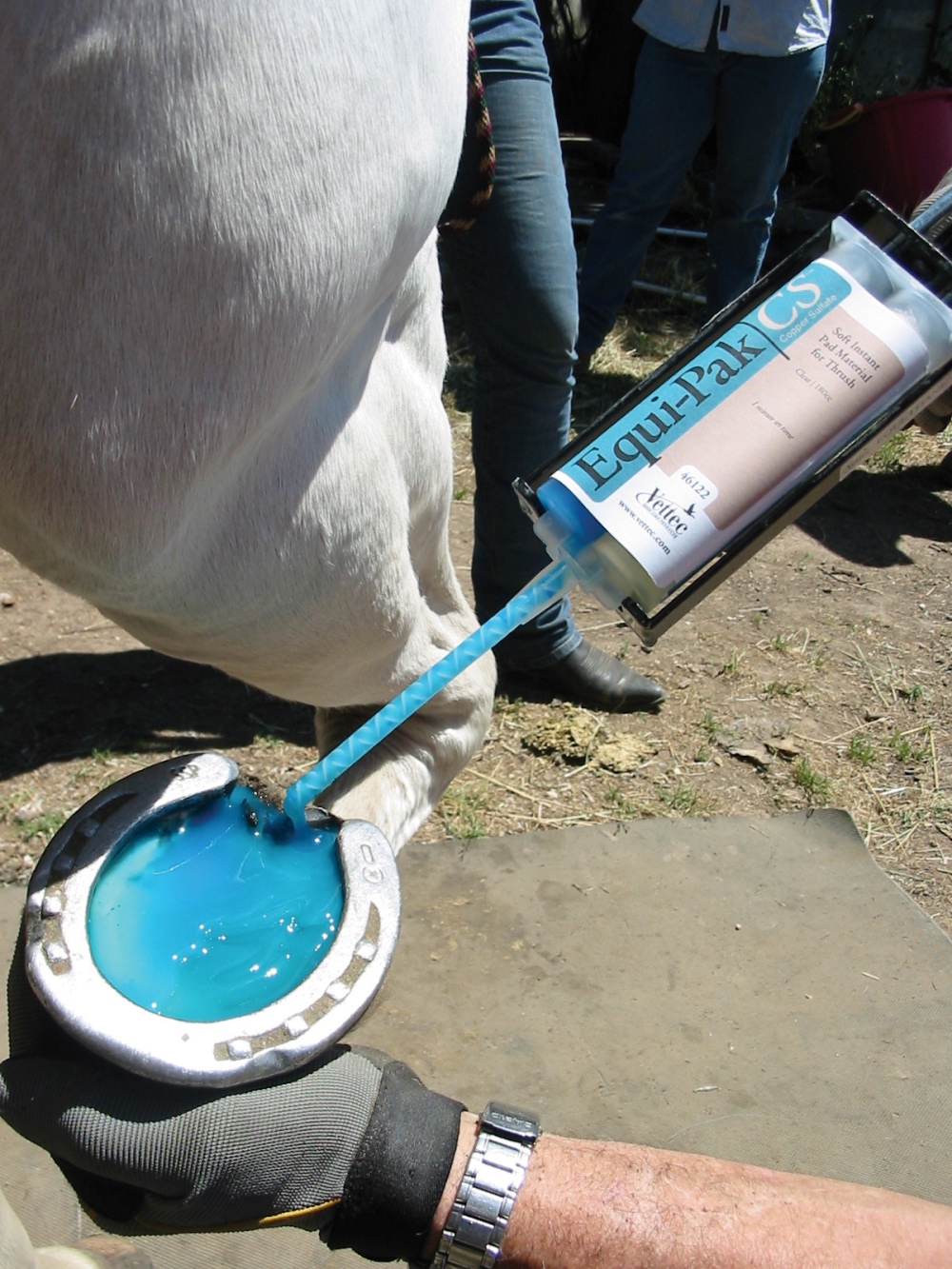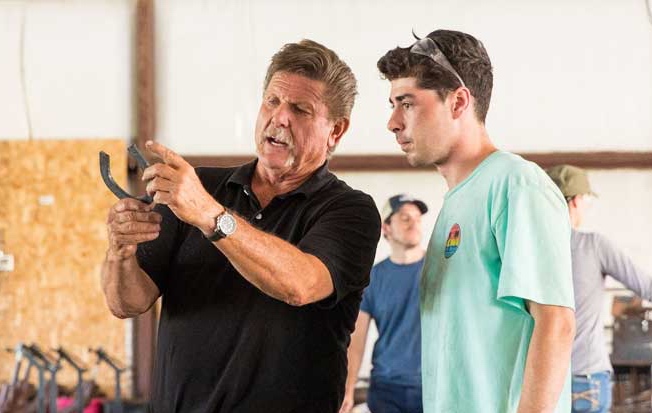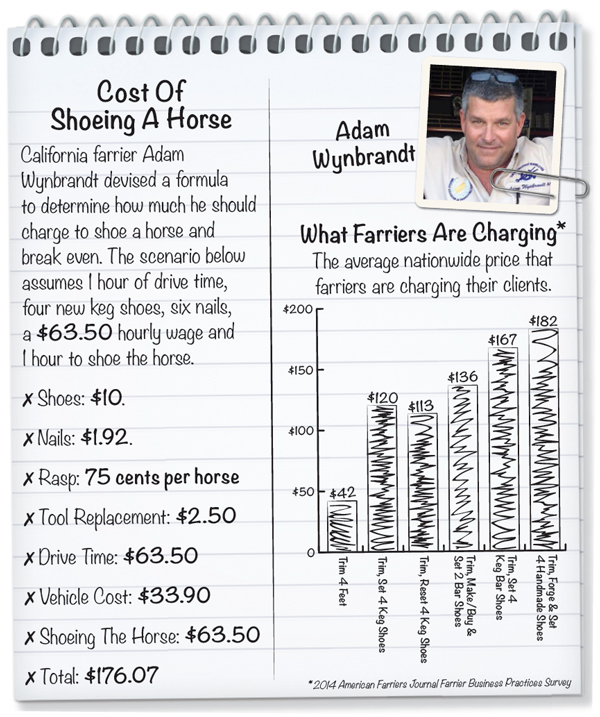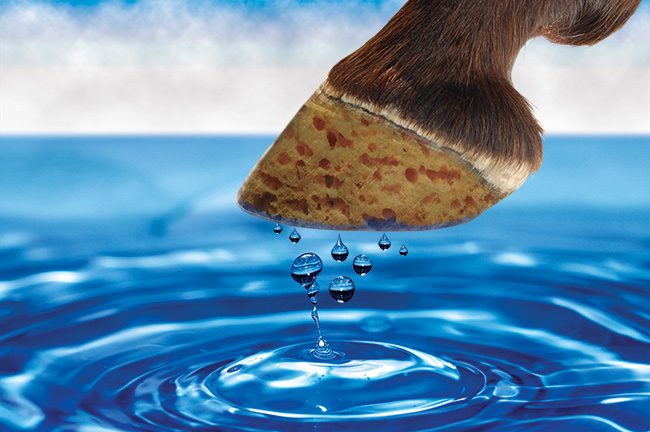The past year has been interesting, to say the least.
While the COVID-19 pandemic has resulted in restrictions in our daily lives, it also has been one of the busiest years within the farrier industry as horse owners spent more time with their mounts. With increased business comes a greater need for hoof-care education. As the year comes to a close, American Farriers Journal editors compiled the articles that you read most from each month in 2020.
1. The Mystery Of Moisture And The Equine Foot
Farriers in show barns rail against horses that are bathed too often, while shoers in dry, arid areas sometimes ask owners to let water troughs overflow a bit so horses will have to stand in water or mud while drinking, giving their feet a chance to get some moisture. Some hoof coatings are touted for holding in moisture, while others keep it out.
But when scientific tests are used, the results aren’t clear-cut — and they don’t seem to support these commonly held beliefs. Two presenters at the 2013 International Hoof-Care Summit (IHCS) separately noted that the amount of moisture in a hoof doesn’t seem to vary much — no matter what environment the horse lives in.
2. Farrier School’s “Lawsuit is About So Much More than Horseshoeing”
Esteban Narez wants to learn how to properly trim and shoe a horse. Bob Smith, owner of Pacific Coast Horseshoeing School, wants to teach Narez how to do it. It’s a simple and mutually beneficial arrangement, at least until the state of California enters the picture.
The state government doesn’t want Smith to teach Narez. In fact, it’s actively trying to stop his hoof-care education from happening. Why? Because Narez does not have a high school diploma or an equivalent.
It’s important to note that anyone in the United States — including California — can legally trim or shoe a horse without an education, certification, board examination, or a license. Yet, California legally requires Narez to have a high school diploma or an equivalent so that Smith and his Pacific Coast Horseshoeing School instructors can teach him how to do it properly?
“This lawsuit is about so much more than horseshoeing,” Smith says. “People cannot allow government agencies to pick winners and losers of life’s lottery. A grown man wants to spend his own money in an attempt to improve his life, and the biggest obstacle is a government agency. Do the American people think that’s OK?”
3. Alfalfa and the Insulin Resistant Horse
Alfalfa can be an excellent addition to most horses’ diets, even for those that are insulin resistant.
Equine nutritionist Juliet Getty often recommends feeding it because it boosts the overall protein quality of a grass-hay diet and, in general, enhances the horse’s muscle tone, immune system and overall health. Some people, though, just don’t want to feed alfalfa — they believe it causes laminitis. After years of working with horses, it appears that it may, in fact, lead to laminitis in some horses.
4. What Do Hoof Rings Say About a Horse’s Health?

Stress. Although it is a natural part of life, stress can have a negative effect on health, and not just for humans.
In fact, horses can experience a variety of stressors that impact their health. Sometimes, signs of stress can show up in a horse’s feet as hoof rings. To keep horses happy and healthy, it’s crucial for horse owners to identify stressors that can lead to hoof rings, and provide proper care to hooves when needed.
5. Pricing for Trimming and Shoeing | Farriers' Horse Ownership
Nationally, the typical full-time U.S. farrier charges $131.46 for a trim and nailing on four keg shoes while part-time farriers charge an average of $94.49 for the same work.
Some 94% of U.S. farriers are not only involved with the footcare needs of numerous horses, but they and their immediate families also own horses, ride and/or compete in many different events.
6. Appeals Court Revives Farrier School’s Lawsuit

New life has been breathed into a farrier school’s lawsuit that challenges California’s private postsecondary education regulation.
The 9th Circuit Court of Appeals reversed the decision of the United States Court for the Eastern District of California to dismiss a lawsuit that was brought by Pacific Coast Horseshoeing School, Bob Smith and Esteban Narez. The lawsuit alleges that the California Private Postsecondary Education Act of 2009 violates the First Amendment rights of Smith and PCHS to teach farriery, as well as Narez’s right to learn.
“The district court determined that the Act regulates only conduct — the forming of an enrollment agreement — and any burdens on speech were incidental, resulting from the government’s regulation of commercial transactions,” according to the opinion of the 9th Circuit Court panel. “When viewed in its entirety, the Act controls more than contractual relations. It also regulates what kind of educational programs different institutions can offer to different students. … Moreover, the panel held that because content discrimination was apparent, the district court should have applied some form of heightened scrutiny.”
7. Sugardine — A Stinky, Gooey Mess That Works When Treating Wound Injuries
Sugardine is simply a paste of granulated white sugar and betadine solution or scrub mixed to a toothpaste or peanut butter consistency, and it is a remarkably safe and effective wound dressing.
It’s so simple that people can’t believe that it actually works until they see it firsthand. Then afterward, they can’t believe no one ever taught them about sugardine.
8. Pricing For Success

What can you charge?
It’s a question that farriers commonly ask and one that Adam Wynbrandt hears often. His response?
“I tell them, ‘Well, no, the question is, what do you need to charge?’” says Wynbrandt, who has 2 decades of farriery experience and owns The Horseshoe Barn in Sacramento, Calif.
9. Dealing With Thin-Soled Horses
The sole is the guardian that shields the sensitive structures of the hoof from contact with the outside world. Acting as the primary barrier against ground surface trauma, it is designed to handle concussion naturally; however, it seems that this once efficient protector has become one of the most abused structures of a horse's anatomy.
While the sole itself can grow quickly, it is the formation of callous that creates the necessary cushioning effect and that develops slowly.
Using healthy hooves from domestic horses as the standard, sole thickness normally is about 3/8 inch, with a uniformed callous extending to the underside of the lateral cartilages and the coffin bone.
Seen in a standing horse, a naturally shaped hoof would also have an arch to reflect the coffin bone's position at the front half of the foot, with the lateral cartilages forming the underpinning for the back half. This type of configuration allows for flexibility of movement, which enables the foot to effectively dissipate the shock of impact. And, while a stone bruise can happen as quickly as stepping on a rock, the amount of force placed on a thin-soled foot will have a direct effect on its susceptibility to harmful trauma in general.
10. For Better Flotation, Try a D-Bar Shoe
While the D bar is another form of an egg bar shoe, it doesn’t increase the amount of bony column support since it is normally the same length as a regular open shoe. However, it does increase flotation, which makes it a very valuable shoe.
When a foot is shod, the natural flotation of the foot is lost due to the thickness of the shoe. Since nature intended for the sole and frog to bear some of the horse’s weight, adding a shoe lessens the amount of weight that is supported by the frog due to the thickness of the shoe. This reduction in supporting weight is not necessarily bad as it can be used to correct many causes of lameness.








Post a comment
Report Abusive Comment